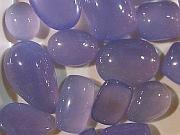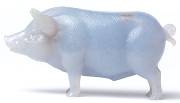Description Microcrystalline vs. Crystalline Quartz Chalcedony is the general name for all varieties of microcrystalline quartz. While all types of quartz have the same chemical makeup, quartz may have either a microcrystalline form, where crystals are so small that they cannot be seen without some kind of visual aid, or a crystalline form, where crystals are large enough to be seen with the human eye. All varieties of microcrystalline quartz are generally referred to as chalcedony; however the term chalcedony also refers specifically to a particularly fine variety of blue chalcedony. A hard, durable gemstone, chalcedony may be cloudy, translucent or opaque, with a waxy luster like a polished candle. Varieties of Chalcedony Some varieties of chalcedony are agate, carnelian, chrysoprase, and onyx. Jasper is a special variety of chalcedony that due to its high content of foreign materials is usually quite opaque. Folklore In Victorian Times, dreaming of chalcedony foretold of friends rejoined. Symbolism Hour: 8:00 pm Birthstone, pre-1900, Arabic: June Wedding anniversary, pre-1900: 39th Apostle: Andrew Star: Tail of Capricorn 15º of Aquarius Planet: Mercury, Jupiter and Saturn See also |
|



